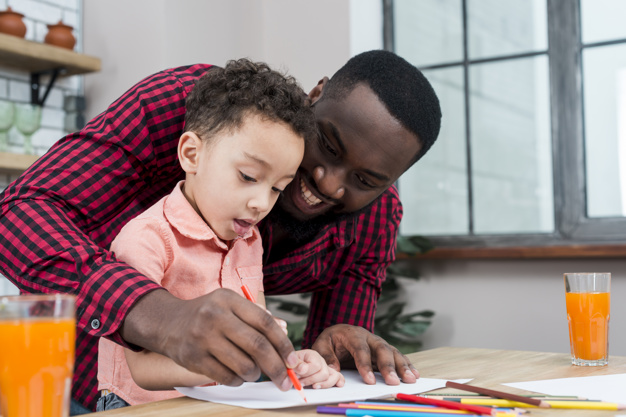Schools all over the world on lockdown due to coronavirus, which means your kids are likely to have more than enough time on their hands. If this closure continues for several weeks, the long-term impact is that your children may start losing their reading culture and find it very hard to adjust when school opens again. To this end, we have come up with this post on how to homeschool your kids, to enable you to become their “temporary teacher” and facilitate their learning at home.

If your children attend a school that already adopted virtual learning, you can be sure that they are still keeping up with academic work. Nevertheless, learning how to homeschool your kids will help you complement the effort of the virtual teachers.
In this post, we will give you some tips on how to get started with homeschooling, but before that, we want to address a major concern for parents working from home. If you are one of them, you would be thinking about the possibility of combining homeschooling with working from home.
First of all, you mustn’t think of homeschooling – during this period – as real schooling for your children. You don’t necessarily need to adopt a curriculum. All you need to do is to consciously create time to share knowledge with your children.
Secondly, accept your limit that you can’t efficiently combine working from home and homeschooling simultaneously. Therefore, you are only trying to fill in the education gap for the period your children can’t physically meet with their teachers.
Below are a few tips that will help you get started.
How to Homeschool Your Kids While Schools Are on LockDown
- Involve your kids when planning subjects and topics
As a parent, you would have some subjects and a list of topics you want to teach your children, but it is advisable to run them through your children to know if they have been taught in school or not. At the same time, ask your children to come up with a list of things they would love to learn. Then compare what you have with what they expect, and decide on the subjects/topics to be covered.
To make homeschooling fun and educational, make sure the topics aren’t just theory whereby all the teachings have to be done on a table with a book open. You should incorporate practical-based topics, and obviously, it has to be practicals that can be done at home. A few examples include learning chemistry through baking; learning biology and agricultural science through gardening; and more.
- Create homeschooling space
To make your children have a feeling of being homeschooled, you need to dedicate a space in the house for classes. The materials required in a standard homeschooling space include a black or whiteboard, desk, bookshelves, computer and internet. However, in the case of a lockdown whereby stationery markets aren’t open, you would need to improvise.
- Schedule classes
In schools normally, students take classes based on schedule according to a set timetable. Therefore, coming up with a homeschooling schedule – which states how classes will run – is the most important tip in this article on how to homeschool your kids.
Use the schedule to foster family time, by incorporating family breakfast or dinner time, as well as chores that all family members would do together. You may also want to set time for educational games, which can be played by all members of the family.
The schedule should also have time for recess or outdoor time. The recess time would allow the children to get outside the house, play, and explore their environment. Don’t forget the importance of play and recreation in a child’s development.
Once the schedule has been created and agreed by everyone, paste it in a conspicuous place within the house, and follow the schedule dutifully.
- Explore art and craft
Art is an important part of education, and many children love it because it allows them to explore their creative power. And that’s the reason, we organize Art Exhibitions every year for our students.
In your homeschooling portfolio, consider adding art and craft. In the case where there’s a lockdown and people can’t get access to the market; the advice is to allow your children to get creative with worn-out household equipment and utensils; you would be amazed at the things they come up with.
No doubt, a lot of waste would be generated as your children work on their art projects and you may be worried about the mess. But worry less; allow them to create, have fun, and wait to see the products of their imagination!
- Give room for downtime
Since you aren’t a trained teacher who knows how to coordinate students and since your children didn’t expect that a day will come that you would have to become their “temporary teacher,” homeschooling may lead to some tension and friction. Besides, some of your children may be expecting that school closure is an opportunity to watch all the movie series they have missed. (You can read this article for tips on how to prevent your kids from watching too much TV).
To mitigate the tension and friction, make room for downtime when your children would work on projects alone. This downtime allows them to disconnect from everything and facilitate independent exploration. It also gives you time to focus on your “work from home” tasks among other things.
Although there are some advantages of homeschooling, it isn’t exactly straightforward, especially when you have to combine it with working from home during a lockdown. Nonetheless, it is a way of helping your children to keep abreast with their academics and making them use their time productively while schools are shut.
We hope that the few tips provided in this article on how to homeschool your kids are enough to help you get started.

